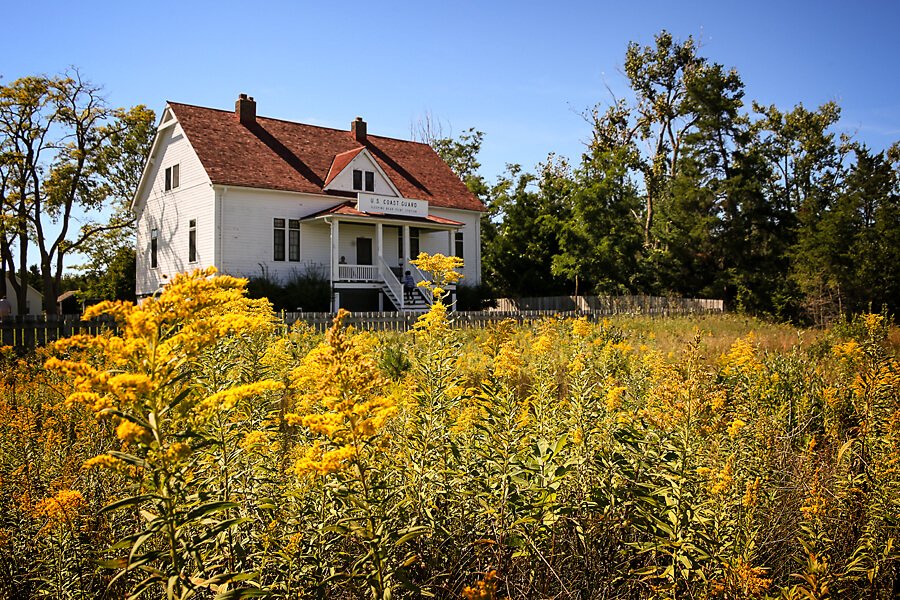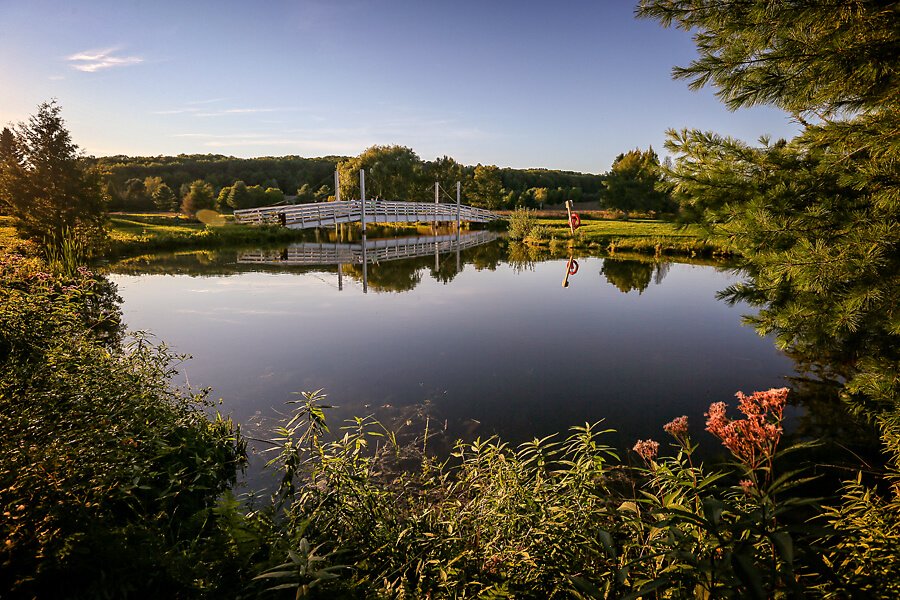Glen Haven, Leland, and Fishtown | Michigan
A scenic 30 minute drive from Traverse City, up the Leelanau Peninsula is the quaint village of Glen Haven off M-109. We took a leisurely Sunday drive to this area recently and enjoyed one of those “perfect end of summer days”.
There is so much rich history in this little area. It’s a great place to stroll through the buildings of the village and get a little feel for what it must have been like back when it was a frontier port for passing vessels and travelers. We spent a little time in the Blacksmith Shop, getting a little insight into how the smithy was able to bend, cut and shape red-hot iron into the metal objects needed by villagers.
The 1920’s blacksmith shop is set up reminiscent of it’s prime with objects that might have been sitting around waiting for repair. The volunteer working in the shop gave us a little demonstration of bending the iron into a candlestick, or as she referred to it, an old style flashlight.
Using the bellows to blow on the fire.
Heating the iron
After a little pounding and bending, she finished a piece ready to hold a candlestick.
From the main village, follow the signs to the left to the The Sleeping Bear Point Coast Guard Station Maritime Museum. The Sleeping Bear Coast Guard Station (open from 1902-1942) was moved to this site in Glen Haven Village in 1931 as migrating sand dunes were threatening to bury the station at Sleeping Bear Point. Horses were used to relocate the buildings the 1 ½ miles to this spot.
From the canoes of the Indians to oceangoing freighters, vessels of all types have plied the waters of the Great Lakes. As the Great Lakes area began to prosper, the Manitou Passage – a narrow, deep-water channel – became a major shipping lane. Many ships docked at Glen Haven to pick up lumber and fuel wood. Fog, storms and shoals caused more than 80 wrecks in the Sleeping Bear area. Most of the ships ran aground. As a result, a number of lighthouses and lifesaving stations were built along these shores by the early 1900’s. (These details were pulled from the signs and information available at the Museum grounds).
If a ship ran aground, the crew could launch the 23-foot surfboat down the marine railway toward the lake for open-water rescues. There is now some distance between the boathouse and the water due to the build-up of sand over time.
Many local men sought work with the U.S. Lifesaving Service and U.S. Coast Guard. Regular pay for non-farm work and the challenge of rescue work attracted rural youth. Seeing pictures and samples of clothing they were gives you a feel for the cold, hard work these men performed. When working at the station the crew shared rooms in this building.
What we didn’t expect was the incredibly beautiful, nearly deserted beaches in this area. We walked out to the end of the walkway, turned left and were completely taken in by the landscape. The tall sand dunes give a little bit of a surreal feeling. When looking that direction it almost feels like your in a desert. But, just look right, left or behind you and see the beautiful shades of blue in the water, seagulls, and Manitou islands in the distance. It is breathtaking!

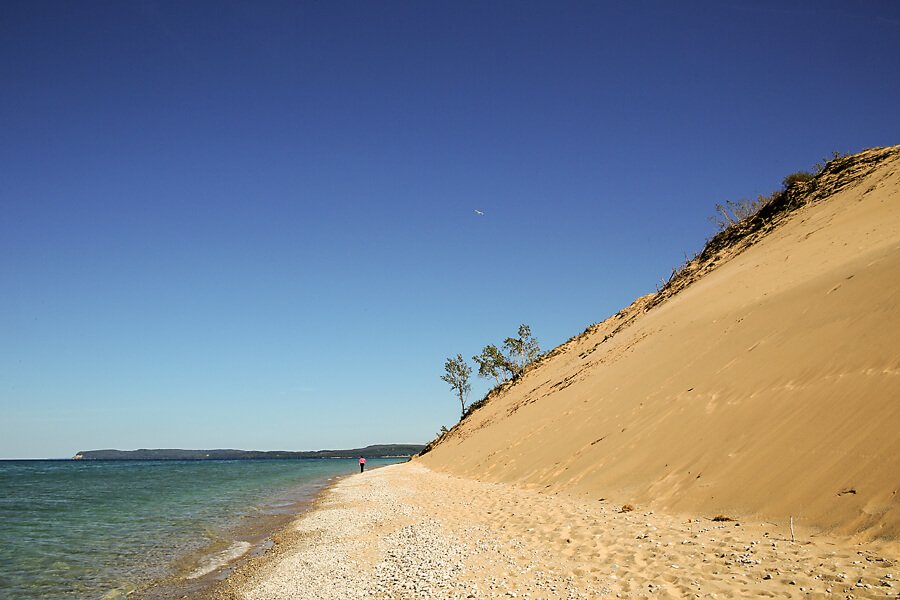
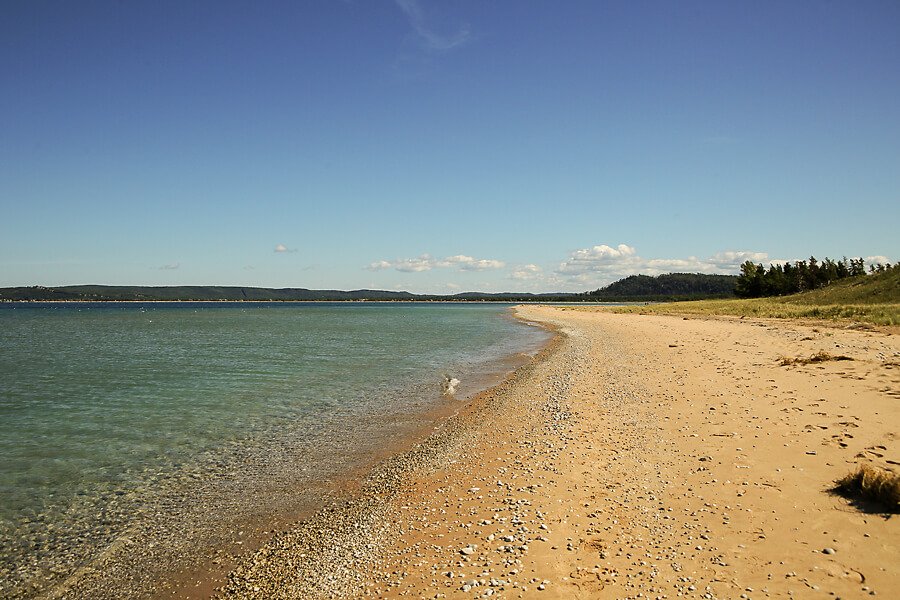
The beaches are a mix of soft sand and smooth rocks and pebbles. It’s a great place to stroll the beach or snorkel and search for stones. After spending a little time walking along the beach, we continued our drive along the M22 route taking in the views and interesting sites along the way.
Shetland School 1871
The beautiful day ended for us with an amazing dinner at The Riverside Inn in Leland. It was a lovely evening to sit outdoors by the river, soaking in the warm sun.
The meals, prepared with ingredients from local purveyors, was delicious!

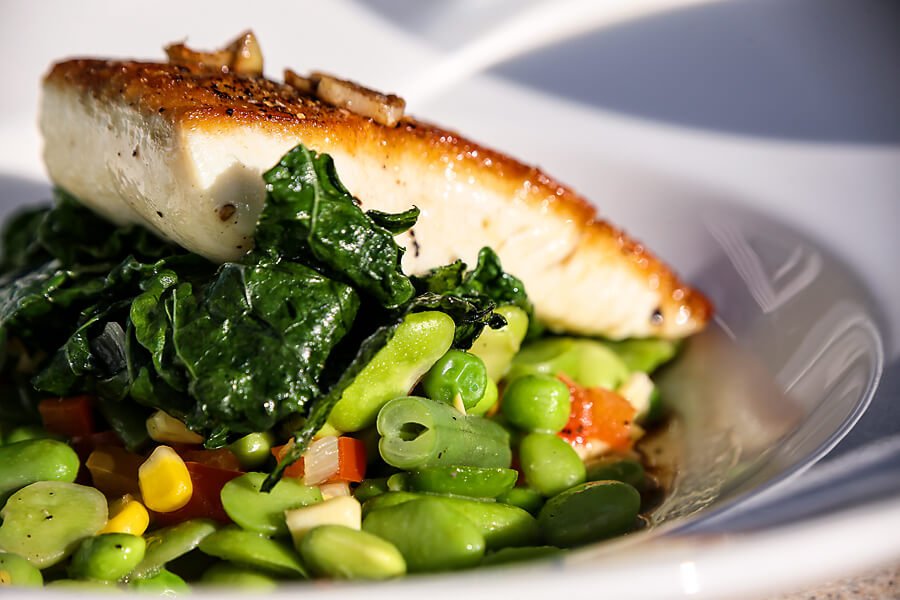
Before leaving Leland we took a walk through the 19th-century village called Fishtown.
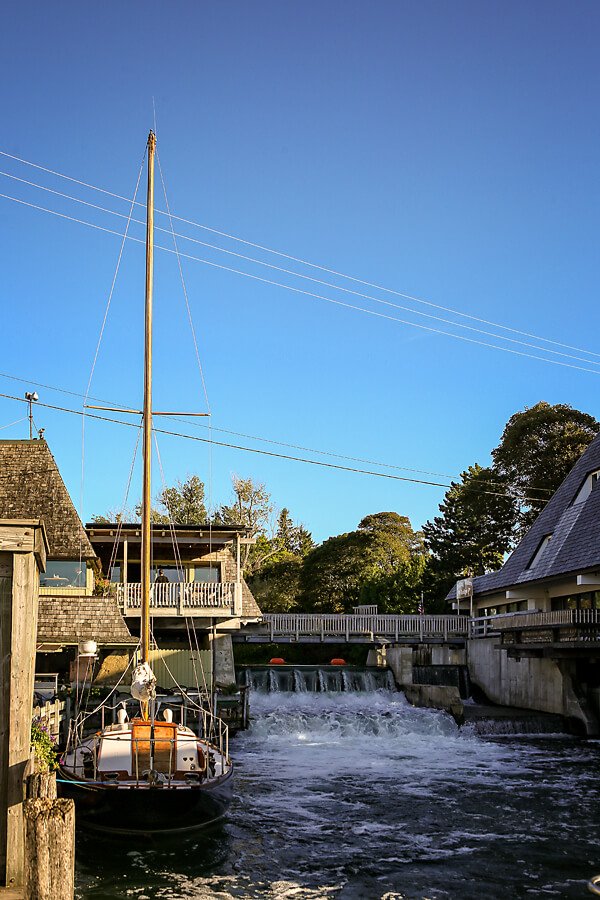
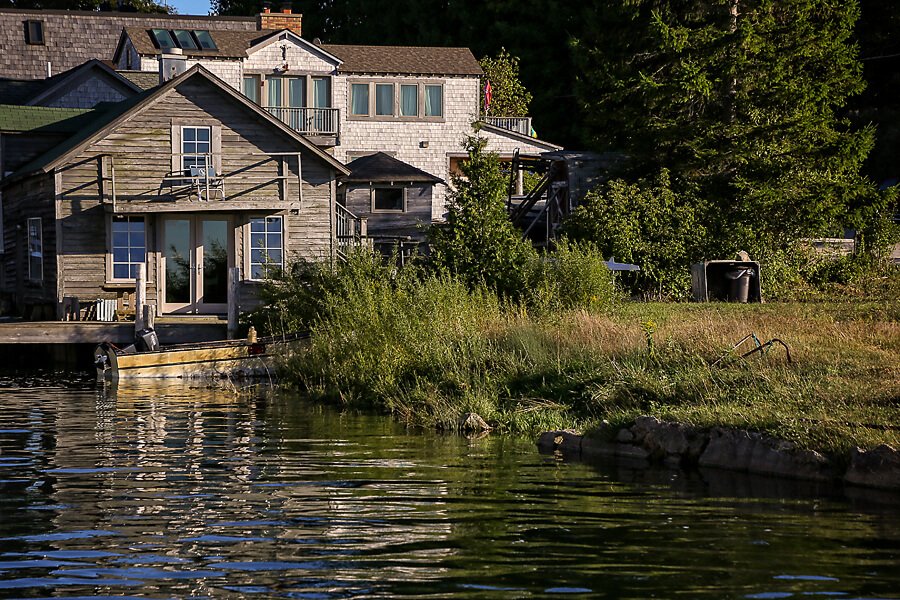
From here you can ferry over to the Manitou Islands – on my bucket list for next summer!
Just happened to see this amphibious car that can travel on land or water – how cool!
As we headed home along M22, I couldn’t resist stopping to catch the reflections in the water at Veronica Valley Park in Bingham Township.
There seems to be endless beauty, nature, and history to discover on the Leelanau Peninsula. Every time we return, I see something new. The beach at Glen Haven was so inviting – we returned the next day to just hang out enjoying the peace, serenity, and crystal clear waters.
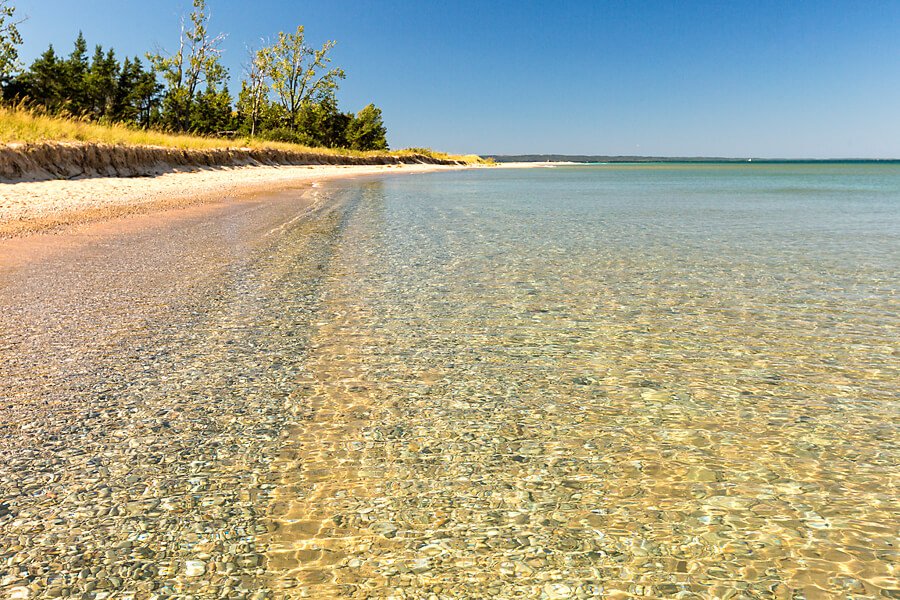
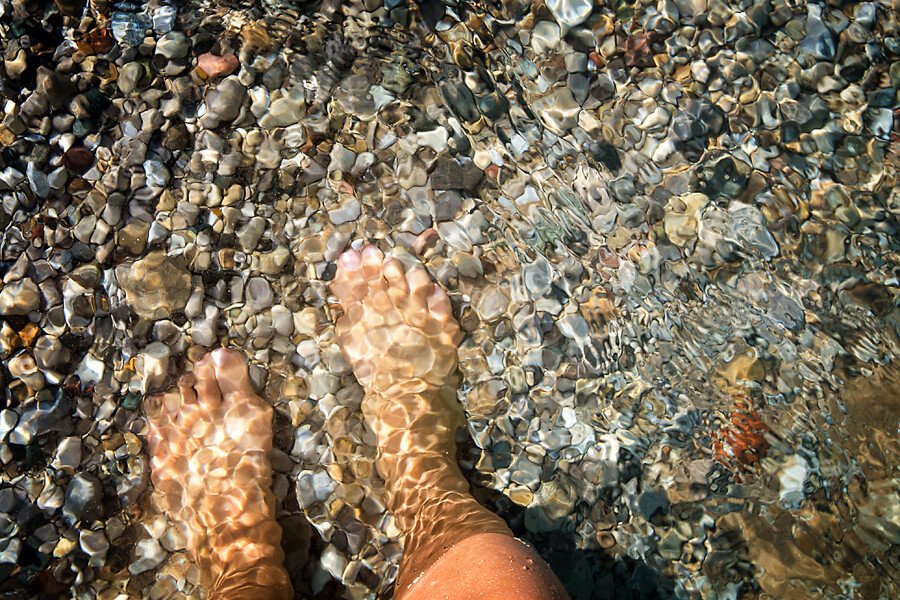
One of these birds is not like the other – I think it’s a Double-crested Cormorant
What do you call a seagull that lives by the bay? A bagel (bay gull). Thanks to Bill’s niece Siobhan for that joke!
The Leelenau Peninsula is beautiful any time of year, and soon the fall color is going to make it even more amazing – go check it out!








